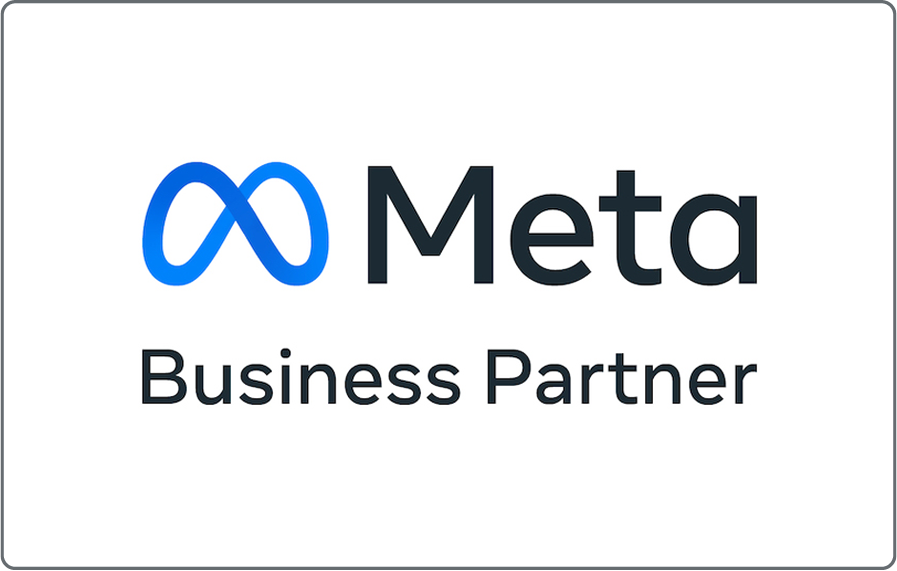What Happened on Social Media in 2020
2020 was a challenging year. There were many unexpected events that changed how the entire world operated. Despite all the bad that happened this year, 2020 was a huge year for social media. With the rise of the use of technology, due to everyone being stuck in their homes, this was a great opportunity for social media to expand their normal uses and make some change.
January
In January of this year, no one was in lockdown and everything was almost normal. People were interacting with others in person and going about their lives without a pandemic.
Meanwhile, Facebook was putting together some new tools to increase privacy settings and efficiency. Facebook created new privacy tools in order to increase the control that third parties have of a user’s data. This will give you the ability to have an “off-facebook” activity and will alert you when third parties are trying to take your information. This also connects to Facebook making ads more controllable for users. This addition will give the user the option to be in a targeted market hence either keep their information to themselves or let brands use their information. You now have an “active status” option for Facebook, meaning you can say whether you are online or not and who can see that status.
Instagram was busy as well. IGTV had an upload update, now you can upload IGTV videos from your central button. Instagram was testing the ability to check your direct messages on a desktop instead of a phone which would make it more accessible. They also added some features to their Stories which includes new stickers and new boomerang modes.
Twitter made strides to reduce harassment on the platform by adding restrictions in replies to tweets. Twitter was also testing the ability to pay users for viral or popular tweets or accounts. Twitter promoted Trend Spotlight ads which would let brands place their ads in the explore section to boost engagement. These ads could be videos, GIFs, or static images. Sadly, Twitter’s audience insight tab is now gone.
LinkedIn has a new feature where you can invite your first degree potential connections to follow your page, thus gaining connections easier. This is optional to avoid spamming. There is a function to stop the invites at 50 per day, but even then it might be spam-like. LinkedIn has also started to roll out a streaming feature where you can stream from third party websites such as Restream, Wirecast, and Socialive. This would make it easier for those to expand their connections which may lead to more job opportunities. This would also help businesses who are looking to expand their network.
TikTok had an explosion of popularity in the fall of 2019. Since then, they have quickly adapted to the standards of Facebook and Instagram. During January, they created a new search page which will give you more control over your feed. These pages include beauty, gaming, and pop culture. They also created a dark mode.
Some new social media networks that emerged in January were Byte, somewhat like TikTok but only includes 6-second video uploads, and YourStand, a social media platform that is centered around products and sharing people’s passions about products.
February
During the month of February, the pandemic had not quite hit the US. People were still going about their normal lives.
Facebook had a huge February with many changes to the platform. They created a Creator Studio App which makes life easier for those that manage business pages on multiple platforms. Using this app will allow you to: manage multiple pages at once, view/edit posts, respond to fans, receive notifications, and see insights on their posts. This will be life-changing for those that post similar content on different social media platforms. For example, if you managed two different companies on Facebook, Creator Studio would allow you to view both pages easily without having to have one login. This is more efficient especially for those who manage more than a couple pages on Facebook. They also created a one-time notification API. This will make it easier for businesses to send a one-time notification to their customers when they want to be notified. This will limit spamming. In efforts to better protect a user’s privacy, Facebook partnered with Reuters to identify misinformation in posts. This will give Reuters the ability to fact-check posts on both Facebook and Instagram. Therefore, more data will be given to other parties but there will be more regulation for posting, especially political posting. There is also a new stories discovery page, new color highlight for tags, and new feed sorting options.
Instagram also took on many changes to their platform. They added a new way to manage followers by adding a most and least interacted with when going through followers. They also added a new option for simpler communication for business accounts. There is a button on your profile that is labeled “Messages”. By clicking on this, users can be directed to messenger, WhatsApp, or direct messages.
Twitter introduced two new exciting features. First is Chroma Labs, which enables you to edit your stories with templates and frames. In addition to this, they created labels for manipulated videos and pictures. This label which will read, “manipulated media” on a post will show you whether the picture or video is real or not.
TikTok decided to add direct website links on profiles in the biography section and created a profile that is similar to Instagram.
Snapchat had a unique addition in February which was a swipe up feature for their ads. This means that if you saw an ad, by swiping up on the ad you would be directly taken to a website or an information center about what the ad was for. For example, if you see an advertisement for sunglasses, when you swipe up on the ad it will take you right to the product. This will help customers find the products they are looking for and help companies sell the products they are advertising.
March
The pandemic hit the US in March of this year. Almost every social media created a response to Coronavirus in their own way.
Starting off with Facebook, they had an information take on their COVID response. They increased their fact-checking function on posts regarding the pandemic and also banned ads that were exploiting the pandemic as well. They also made a COVID information panel at the top of all users’ feeds in order to efficiently spread reliable information. They gave the World Health Organization free ads to increase awareness on the platform. In addition to changes on the Facebook page, Facebook announced a $100 million grant program that would be used to support 30,000 small businesses that were affected by the virus. New features in Facebook that were not centered around COVID included Facebook Live tool, an updated dashboard for managing live broadcasts that includes new settings for efficiency, and mood mode for stories.
Instagram made their app COVID friendly as well. They added informational prompts at the top of the feed section as well as launched new stickers promoting users to stay at home. When these stickers were clicked on, the user would be taken to informational pages like the World Health Organization and the Center for Disease Control. Another feature that was influenced by COVID was the new co-watching feature to bring people together when they were quarantined in isolation. This would let a group of people watch content with each other even if they were miles away.
Twitter contributed to the COVID response by supporting and verifying informed voices, such as health experts, on the app. This way, users could see who was verified to give out information regarding the pandemic. Twitter announced a $1 million pledge to two organizations, the Committee to Protect Journalists and International Women’s Media, during COVID. Twitter is one of the last of the big social media platforms to add some sort of stories function to a profile.
LinkedIn created free Working From Home courses to continue educating those that needed jobs. They also created a news section that featured news from reliable sources about the pandemic.
TikTok was becoming a very popular app when people were forced to quarantine. Since they had this booming platform, TikTok did everything they could to inform people about the pandemic. They created an informational page about the pandemic. They also united with the World Health Organization (WHO) to make this page and do livestreams with experts from WHO that answered user’s questions and gave advice. TikTok then donated $10 million to the WHO’s response fund. In addition to this, TikTok created a new analytics tool that would measure engagement statistics for creators.
April
During April, people were quarantined and in many parts of the world. Platforms had to start to think of how to keep users interested and engaged.
Facebook created the Facebook Gaming App for users to play, stream and engage with others playing a game. They also included a function called Quiet Mode, made to help people control their time online. Quiet mode gives you a break from your technology. It mutes your notifications and will not let you back into the app before your time limit goes away.
Instagram shifted their accessibility to a desktop with livestreams and direct messages now accessible through those devices. IGTV was also updated with new features such as a section on the explore page for popular IGTV creators, ability to share an IGTV on your story, and the ability to record IGTV using a new hands-free mode.
Twitter updated their explore section to be based more on location rather than popularity. For example, instead of seeing generic advertisements for events or services that are not close to you, you will see advertisements that will be more centered around where you are. They also updated their data sharing policy by limiting the data Twitter uses to only ads that you have seen on the app or on your device. This data will be shared with other platforms in order to see what ads are being looked at and how to improve them.
TikTok also extended their device accessibility by making it possible to log into the platform via desktop. They also created a donation sticker that is being used to boost or donate to TikTok creators.
Snapchat made a new ad format as well as a new story sharing integration between multiple platforms. This will let those exchange photos or videos between Snapchat and other platforms. A new addition to Snapchat is it’s vertical video conversion tool which will let you change a horizontal video into a vertical one.
May
Facebook was very busy in May. A new AR studio was released, Sparks AR studio with more tools. This studio gives anyone with the skills necessary to create effects for their own stories. These effects could be saved and used by other users. There was also a music section of the studio that will allow you to make effects that change depending on the music you were using in your stories. Facebook also released 15 new Blueprint courses, which are educational courses for social media marketers, which will continue to teach people about marketing. Facebook also released ‘Shops’ that will give businesses the opportunity to create an online store through Facebook.
Instagram has now incorporated IGTV advertisements up to 15 seconds long. They also have included a new way to tip during live streams. Viewers can now simply press the newly added badge icons to tip the creators they are watching. The platform also added a messenger room for group chats which will allow you to start video chats with people as well. Additionally, Instagram expanded on their features by adding a ‘Guides’ tab to certain profiles which highlight recommendations or tips toward more business related content.
Twitter did not incorporate new features but was in the spotlight when Trump attacked Twitter. In simple terms, Twitter started flagging some of Trump’s tweets and he accused Twitter of being against conservative speech. This was a legal battle regarding Section 230 of the Communications Decency Act. This act protects social media platforms from their users. Trump wanted to remove this act but its removal would negatively impact social media networks. As of now, nothing has been removed.
LinkedIn launched a polls feature for posts and merged live streams with events pages in order to host events through the platform to keep people safe yet engaged online. For example, instead of having to be invited to a livestream, you can enter the livestream through the homepage. This will make it easier for bigger businesses to host live events.
TikTok has now launched music rules and now can only use royalty-free commercial music for videos.
June
June was a slow month for social media with only new updates from Facebook, Instagram and Twitter.
Facebook launched the ability to switch between personal and business accounts on messenger. This will make it easier for business owners to switch between their professional and informal lives. In preparation for the upcoming election, they also launched a voting information center and the option to opt out of political ads.
Instagram now has ads that are not connected with Facebook. This will reach different audiences more effectively. For example, a company can create specific advertisements that will be more suitable for their different audiences on different platforms. Instagram also created pride month effects for Stories.
Twitter launched audio tweets which will change the way tweets are received and given.
July
Facebook created a new algorithm that will make original content, this meaning posts from friends, be prioritized in your feed. They also created a Touch ID and Face ID security feature for messenger that makes your chats more private.
Instagram created brand deals for TikTok creators for their launch of Reels, which launched in August. Instagram also created a feature that lets you pin a comment on a post.
Twitter launched the ability to have direct messages on a desktop. This will increase accessibility to your messages.
LinkedIn created a new career opportunities hub that was centered around the pandemic. This would give free access to skills training to help those get a job. For example, LinkedIn offers skills and educational tests that add to your profile that give you badges. When you go into the hub to find a possible new job, these free skills training badges will stand out to employers that are hiring.
TikTok was under consideration for being banned in the USA due to low privacy features.
Pinterest created a new feed algorithm that would highlight videos, new features, and content from diverse backgrounds.
August
Facebook released a whole new look for their homepage. This was a Horizon Virtual platform that gave people that ability to have an avatar and create new experiences while online. Facebook also expanded their analytics to group administrators. This would give those users the information about their posts within the group.
Instagram launched Reels, a 15 second video that is a new section of content on Instagram. This is similar to TikTok. Instagram also added suggested posts to your feed, these posts are of people that are similar to the accounts that you follow. There was another addition that gave users the ability to merge messenger and direct messenger.
Snapchat has new sharing options that would let the user share snapchats with those that are not on the platform via a shareable link.
TikTok worked this month to not be banned. They also had Microsoft and Oracle interested in buying the app which would save it from being banned.
September
Facebook launched a Facebook Business Suite which will combine your business profiles from Facebook and Instagram into one space that is available on desktop or through an app. This tool will increase efficiency when you manage an account on multiple platforms. For example, a company that has pages on Facebook and Instagram will be able to work both profiles in one studio so that it is easier to monitor the activity as well as interact with clients.
Instagram created a Rights Manager which helps find copyright infringement on both Facebook and Instagram posts. This will alert sensity content to users and creators.
TikTok made an official deal to sell to Oracle, but Oracle must develop a new feed algorithm in order to seal the deal.
LinkedIn now has a Stories feature that is globally used. This is one of the last platforms that has added a Stories feature to their platform.
October
Facebook created a new messenger look to change it up. It is more customizable and gives the users backdrops and themes to choose from. For the Facebook Groups section, new features were added to the page. This includes an administrator assistant, group topics, groups added to brand collaboration manager, realtime chats, Q&A tools, and public group discussions in the feed. This will change how the Groups page is used.
Instagram created new resources for small businesses in a site called ‘The Season for Shops’ in order to showcase smaller businesses that need help during the crisis.
TikTok became unbanned in the US and launched a partnership with Shopify, a tool to help users shop on the app.
November
Since we have just exited November, there have not been too many updates about social media apps from this month.
Facebook created a vanish mode for messenger that would imitate the ability to delete messages like Snapchat. This would be set by the user and messages would automatically vanish after the message is seen and the chat is closed.
Instagram redesigned their Homepage and gave easier access to Reels and Shop sections by creating their own tabs on the explore page.
Twitter officially launched Reels, similar to an Instagram story, where users can add content on their profile page for a limited amount of time.
This year was a very eventful time for social media. Although our world was turned upside down from this pandemic, social media platforms took it upon themselves to make the internet more accessible and user friendly.
Source List:
https://awario.com/blog/social-media-news-january-2020/
https://www.socialmediatoday.com/topic/social-media-updates/
https://awario.com/blog/social-media-news-february-2020/
https://awario.com/blog/social-media-news-march-2020/
https://awario.com/blog/social-media-news-april-2020/
https://awario.com/blog/social-media-news-may-2020/
https://awario.com/blog/social-media-news-june-2020/
https://awario.com/blog/social-media-news-july-2020/
https://awario.com/blog/social-media-news-august-2020/
https://awario.com/blog/social-media-news-september-2020/
https://awario.com/blog/social-media-news-october-2020/
https://www.jckonline.com/editorial-article/social-media-updates-nov-2020/
https://www.trendhunter.com/slideshow/november-2020-social-media









